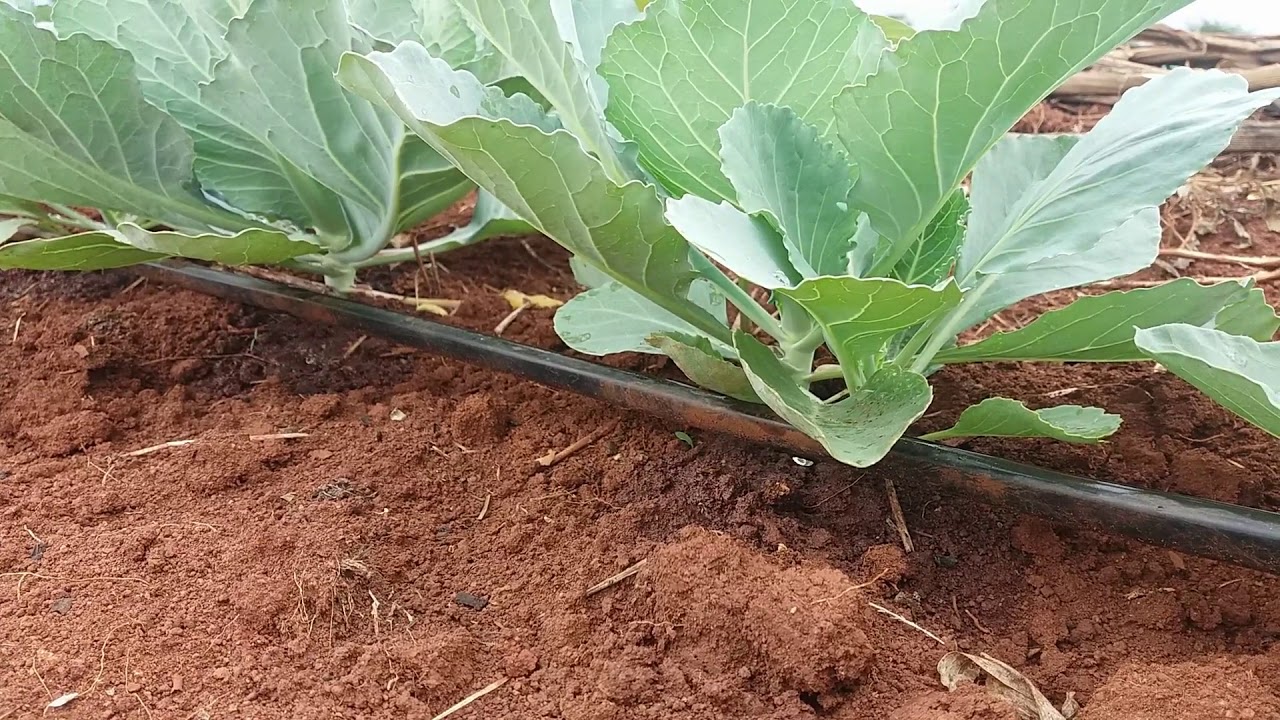
You need a drip irrigation system for your cabbage farm: Here’s why and how to set up
Cabbage is a water-intensive crop that requires a consistent water supply throughout its growing season. The amount of water needed will vary depending on the climate, the soil type, and the variety of cabbage being grown. In general, cabbage needs about 1 inch of water per week.
There are a number of different ways to irrigate cabbage, but the most efficient method is drip irrigation. Drip irrigation delivers water directly to the plant’s roots, reducing evaporation and runoff. This can save water, improve crop yields, and control weeds.
There are a number of different ways to irrigate cabbage, but the most efficient method is drip irrigation. Drip irrigation delivers water directly to the plant’s roots, reducing evaporation and runoff. This can save water, improve crop yields, and control weeds.
Equipment required
To set up a drip irrigation system for cabbage, you will need the following:
Drip tape: Drip tape is a thin, flexible, perforated tube with small holes. The holes allow water to drip out slowly and evenly.
Drip emitters: Drip emitters are small devices attached to the drip tape. They control the flow of water and ensure that it is delivered evenly.
Pressure regulator: A pressure regulator is used to reduce the pressure of the water supply. This is important because too much pressure can damage the drip tape and emitters.
Filter: A filter is used to remove dirt and debris from the water supply. This is important because dirt and debris can clog the drip tape and emitters.
How to Install
Once you have the necessary materials, you can install the drip irrigation system. The following steps will help you get started:
Lay the drip tape out in the rows where you will plant cabbage.
Attach the drip emitters to the drip tape every 12-18 inches.
Connect the drip tape to the water supply.
Turn on the water and check for leaks.
Once the drip irrigation system is installed, you can plant your cabbage. Be sure to water the cabbage regularly, especially during the hot summer months.
Why drip irrigation?
You need drip irrigation systems in your cabbage farm for several reasons.
Water conservation: Drip irrigation systems are very efficient at delivering water to plants’ roots, which helps conserve water. This is important in areas where water is scarce or expensive.
Increased yields: Cabbage is a water-intensive crop, and drip irrigation can help to increase yields by up to 30%. Drip irrigation systems can help to increase yields by providing plants with the water they need when they need it. This is especially important for crops like cabbage, which are sensitive to water stress.
Improved quality: Drip irrigation systems can help improve crops’ quality by reducing the risk of diseases and pests. This is because the water is not splashing on the leaves of the plants, which can help to prevent the spread of diseases.
Reduced labor costs: Drip irrigation systems can help to reduce labor costs by eliminating the need to manually water crops. This can save farmers time and money.
Increased profits: The increased yields, improved quality, and reduced labor costs associated with drip irrigation can lead to increased profits for cabbage farmers.
Additional Benefits
Here are some additional benefits of using drip irrigation systems:
Reduces weed growth: Drip irrigation systems deliver water directly to plants’ roots, which helps reduce weed growth.
Improves soil health: Drip irrigation systems help to improve soil health by reducing erosion and promoting the growth of beneficial soil microbes.
Increases crop uniformity: Drip irrigation systems help to ensure that all plants receive the same amount of water, which results in more uniform crop growth.
Improves crop stress tolerance: Drip irrigation systems help plants to tolerate stress, such as drought and heat.
Factors to consider when purchasing a drip irrigation system
If you are considering using drip irrigation systems on your cabbage farm, you should keep a few things in mind.
The size of your farm: Drip irrigation systems can be expensive, so it is important to consider the size of your farm before making a decision.
The soil type: Drip irrigation systems work best in sandy or loamy soils. Clay soils can be difficult to irrigate with drip systems.
The climate: Drip irrigation systems are most effective in areas with hot, dry climates. In cooler climates, drip irrigation systems may not be necessary.
Helpful tips to consider
Here are some tips for irrigating cabbage:
Water early in the morning so the leaves have time to dry before nightfall. This will help to prevent diseases.
Water deeply so that the water reaches the roots of the plants.
Avoid overwatering, which can cause the roots to rot.
Monitor the soil moisture level and adjust your watering schedule accordingly.
Consult Mazero!
If you are unsure how to set up your drip irrigation system in your cabbage farm, it’s time to consult Mazero.
Our team of experts offers you professional technical support and advice on the best methods to irrigate your plants effectively. Besides, we provide high-quality drip irrigation equipment and installation for you at an affordable price. Contact us today!

